Dovidokh is the capital of Iranian double-sided but unfamiliar carpet
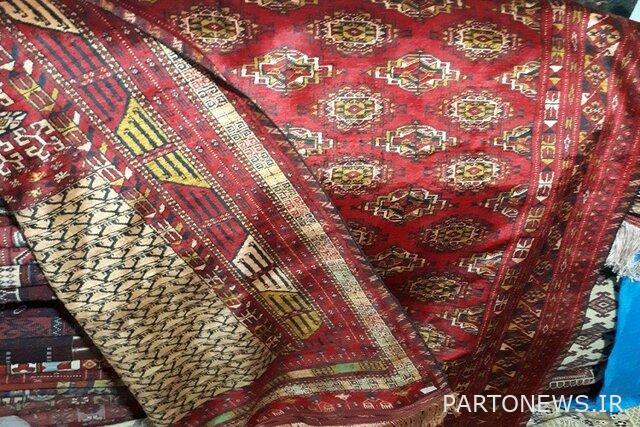
The world-registered double-sided carpet is an art mixed with silk threads that depicts a double-sided all-silk carpet in the capital, from the beautiful nature of Iran to the Moscow Palace.
When it comes to exquisite double silk rugs, the first place that can be imagined to buy this art is the village of Dovidokh in Raz and Jirgalan. At the zero point of the border between North Khorasan and Turkmenistan, there are people who started their art years ago and passed on the secrets of their art from one generation to another.
Dudukh all-silk carpet, which can be boldly said to be a large volume of production by Dudokh women, has illuminated the lights of foreign carpet markets with astonishing images and unique colors of silk yarns.
The village of Dovidokh Khastagah is one of the most exquisite types of Iranian carpets, whose name and reputation are complex in Asia and Europe, and the handicrafts of women in this region draw the houses beyond the borders by means of a carpet woven in a wooden frame.
The village of Dovidokh, with about 500 active workshops, is known in the world as one of the origins of the all-silk double-sided carpet and the capital of this handicraft, but good things have not yet happened for the carpets produced in this area. While washing silk threads in a river that runs from the beginning of the village or passing a man with a rug on his shoulder, you are told that you have reached the capital of exquisite carpets on all the world’s silk.
The fame of this carpet has become global and has reached countries such as the Netherlands, Italy, Japan, Germany, Australia, and 3, and until a few years ago, when there were no sanctions and coronations, foreigners themselves went directly to Duduk to buy, but still It is unknown to the Iranian people and they have not heard the name of this carpet or seen any examples of it.
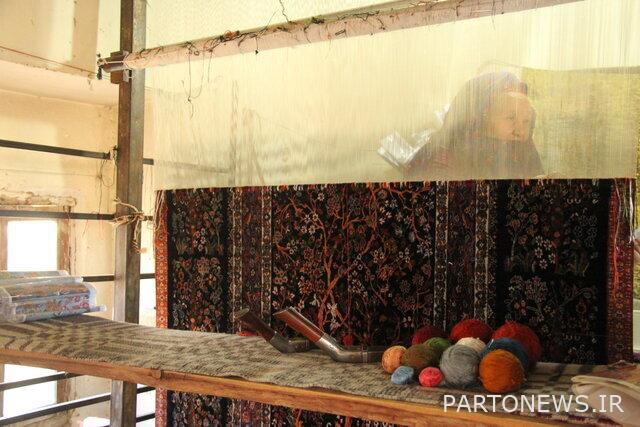
The sale of two layers of all Doydokh silk was first woven by Ms. Chi Chi, a resident of this village, then the art was transferred to her 9 daughters and two sons, and now most of the women of Dovidokh village are engaged in weaving these exquisite rugs. Its beautiful design and colors will delight any viewer.
Ms. Chi Chi is still alive and despite the fact that she is 85 years old, she is weaving this type of carpet and says: At first, I used to weave carpets in the usual way that everyone weaves, but one day It occurred to me to try another role with the threads on the other side of the rug, which is not possible at all, and I saw that I could do this, and since then I have been weaving the carpet in two ways.
At first we weaved the carpet with woolen threads, but later we used silk threads and weaved silk carpets with two different designs.
Most of the customers of this carpet are foreigners, says Ms. Chi Chi, explaining about her first foreign customer: My first foreign customer was “Rose Marie”, Rose Marie was one of the Italian tourists who was the guest of the late Dr. Ghiyadi ( He was one of the doctors and horsemen of Raz and Jorglan region) and Dr. Ghiyadi brought Ms. Rose Marie to this village to see the double-sided carpets of all silk, and she bought three or four boards of carpets, and from then on foreign customers. It was opened to this village and the number of customers of this carpet increased.
Maliha, one of the girls who weaves this type of carpet, says that she is 17 years old and I have been weaving carpets since a young age, and this carpet has made the village of Dovidokh global and opens the door for domestic and foreign tourists to this village.
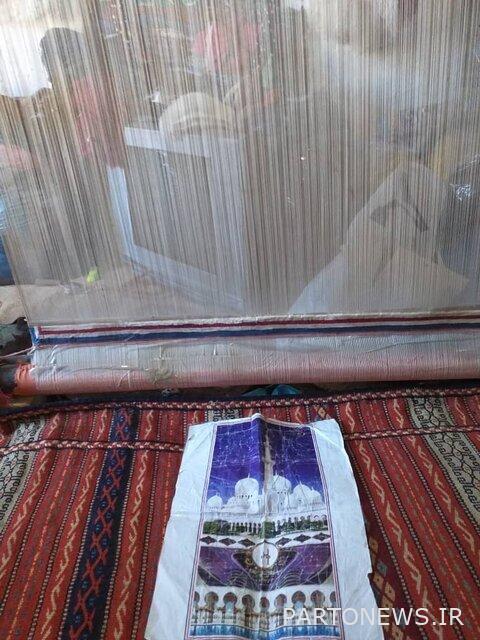
Maliha explains about the most special carpet that is woven, that one of the rugs that we ordered in the past and it was very special for me, was ordered from Germany, in which 250 colors had to be used, and that carpet was priced We sold 60 million tomans.
And for about eight months now, we have been weaving a double-layer rug made of all other silk, which we also ordered from Germany, and 255 colors are used in it, and the design of this carpet is Moscow Palace with ballet dancing.
He says: Most of the double-layer carpets are with two different designs on the front and back of the carpet, which is very time consuming and delicate, but we are facing a severe problem of selling them, and since most of the villagers make a living this way, it is difficult. We have encountered.
Now, carpets are an integral part of the life of the runners, says the agile Dehyar of this tourist village, adding: Fewer houses and families can be found in the village that do not produce these rugs, and most women are engaged in weaving them.
He continues: There are 560 families living in this village, where there are 500 active carpet weavers, but the people of this area are having a hard time selling it. In the past, foreign customers came from Japan, Germany, and so on. They used to buy carpets and leave, but now either there is no customer or four or five brokers come from Mashhad and buy and take the carpets every one or two years, and God knows that the money of these carpet weavers after One or two years will be criticized or not.
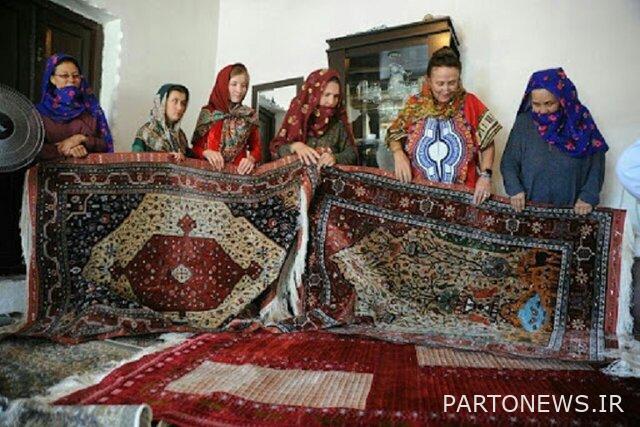
Chabak adds: “Currently, his wife is weaving a double-layer silk rug board measuring 1.5 x 1 meter, which has been weaving for two years and has not yet finished weaving the carpet, and it will take another two years.” It takes to finish and so far the required purchase of silk thread has cost 10 million tomans, which I think after four years I may be able to sell it for 30 to 35 million tomans, but is this figure worth all the effort and time? Is he four years old ?! And if he is a customer at that time and I can sell it.
I think that maybe some of the customers in Mashhad do not know about the production of these rugs in the country, because if they are familiar with it, maybe more customers will visit Dovidokh.
He continues: There are families in this village where three or four people are busy weaving this carpet all day, but their efforts are wasted.
The women of the village, although there are not many customers for their carpets at the moment, also produce the raw materials themselves, which are silk threads. They pay at the end of the summer, and although they can sell the cocoons at a reasonable price, they turn them into yarn and use them in the carpet texture after the rosing operation.
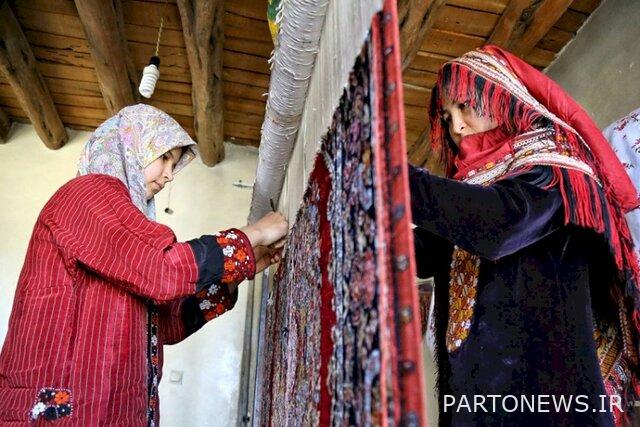
Perhaps only about 15% of Iranians are familiar with the exquisite all-silk carpet of Dovidokh, says Hossein Izanloo, president of the North Khorasan Handicrafts Union, and adds: “I think one of the reasons is that in the national media or in It has been less introduced in other media.
He points out that the current situation of sales of this type of carpet is in a complete recession and one of the most important reasons is the prevalence of coronas and sanctions, he continues: .
He states: Of course, most of the customers of this type of carpet are foreigners and those who are familiar with the production of this carpet in Iran, perhaps its high price, since it is all silk and is woven in two ways, is too much to buy. They do not step forward.
At present, more than 60% of 100% of the double-layer carpet produced by Doydoukh has been stored in the weavers’ houses due to the lack of customers, says Izanloo, adding: “However, none of the women and weavers are unemployed.” They are busy weaving.
Izanloo says: about 500 square meters of exquisite double-layer all-silk carpets are produced annually in this province.

